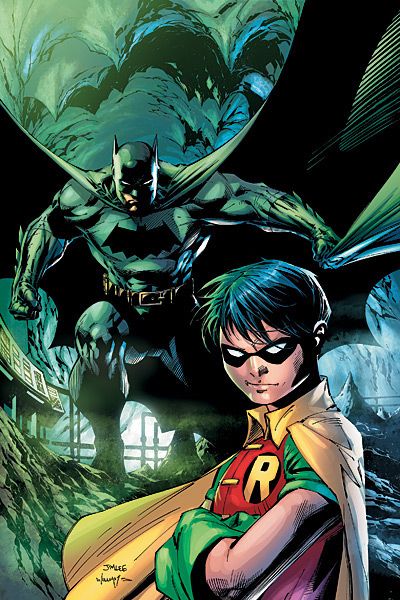When this series launched, back in the first half of this decade (literally), comicdom seemed to react to Frank Miller's return to Batman with a collective, "Oh. Really? Huh." Or maybe with anger. It's hard to remember that far back, but I seem to recall the anger setting in with issues two and three, as readers and online commentators realized that what Miller and artist Jim Lee were going to give them wasn't exactly what they wanted. By the middle of the run, it was pretty apparent that Miller was doing a hard-boiled parody of himself -- of his previous take on Batman -- but with the hyper-slick Lee/Williams art, it was hard to tell. When Miller's drawing Miller, the parody comes through more vividly. When Lee's drawing Miller, it's like your cynical middle-aged dad trying to dress like a teenager.
But most readers seemed to get into the groove of "All-Star Batman" over the past year or so -- or, at least, I did -- surrendering to its relentless and excessive self-indulgences. For me, the Green Lantern-in-the-yellow-room issue nailed down what I enjoyed so much about this series: it takes the standard tropes of the Batman comics, amplifies them, and treats them as the genuine legacy of the hard-boiled pulps. The excessive use of "goddamn" might have clued you in, but seeing Batman contrasted with his future Justice League cohorts emphasized his driven, violent nature. And everything was so over-the-top that you couldn't help but enjoy the comic's gleeful sadism.
In issue #10, Miller veers in a completely different direction. This issue is narration-heavy and leaden. It's excesses are mostly visual -- and even those have been censored before publication, as crotch grabbing isn't appropriate for the goddamn Batgirl, apparently. In many ways, this issue seems more in line with what readers expected from Miller back in issue #1. This is the ponderous, driven Batman whose internal monologue reads, "A six-year-old boy screams as bullets turn his mother's brain into a bloody wad and almost two decades later, he still screams, he still screams and he'll never stop screaming. . ." That kind of language evokes "Dark Knight Returns" and "Batman: Year One" much more explicitly than Miller has done previously in this series.
And this issue also explores the anguish of Jim Gordon, very much in line with the way he has been portrayed in Miller's other Batman works. But the Gordon story is crowded out by Batgirl on a skateboard and Black Canary yapping endlessly to herself. Miller's Batman monologues work well enough, but his Black Canary is verbose and flaccid. He still doesn't have a handle on her narrative voice, but that doesn't stop him from using a whole lot of it. I would say it's an improvement over her awkward Irish brogue in previous issues, but there's so many ineffective Black Canary narrative captions in this issue that I found myself longing for a time when she said fewer words, even if they sounded silly.
After ten issues, "All-Star Batman" is still a mess. It's inconsistent from issue-to-issue and the plot is little more than a series of violent incidents with nothing to tie them together other than the bombast. But it's still kind of a fascinating mess, and I have no idea where it's headed next, which, by my estimation, is a good thing.

